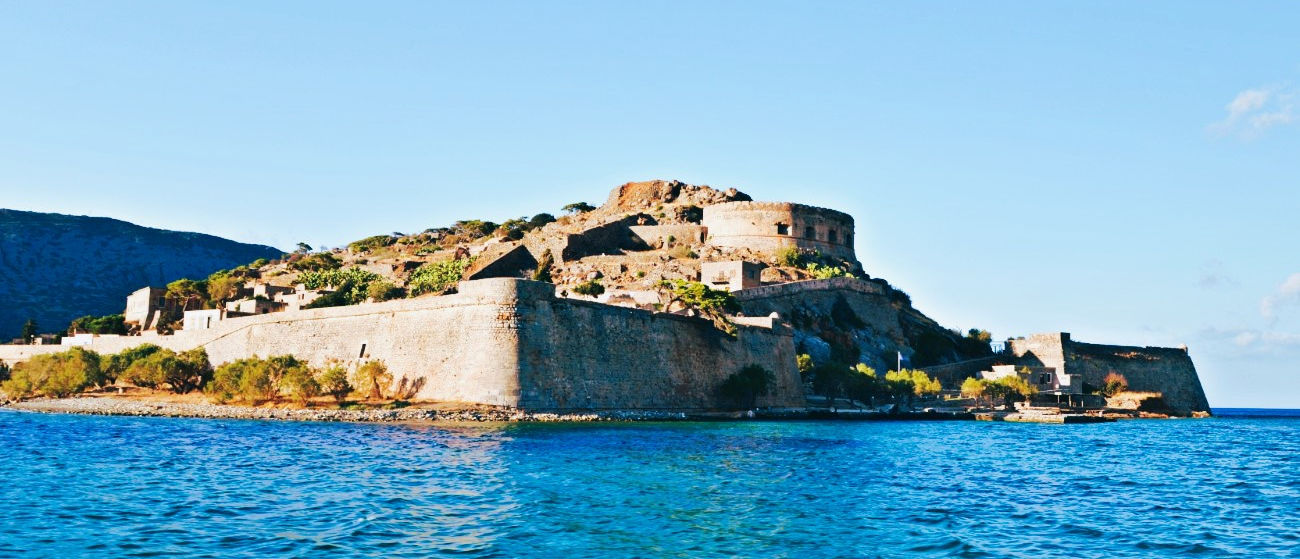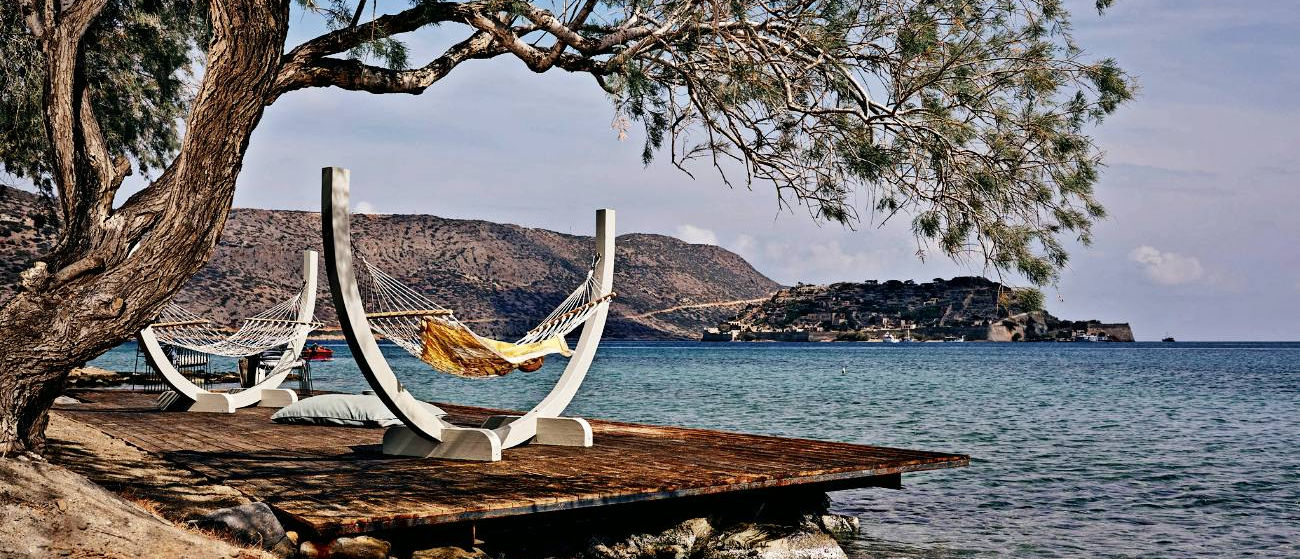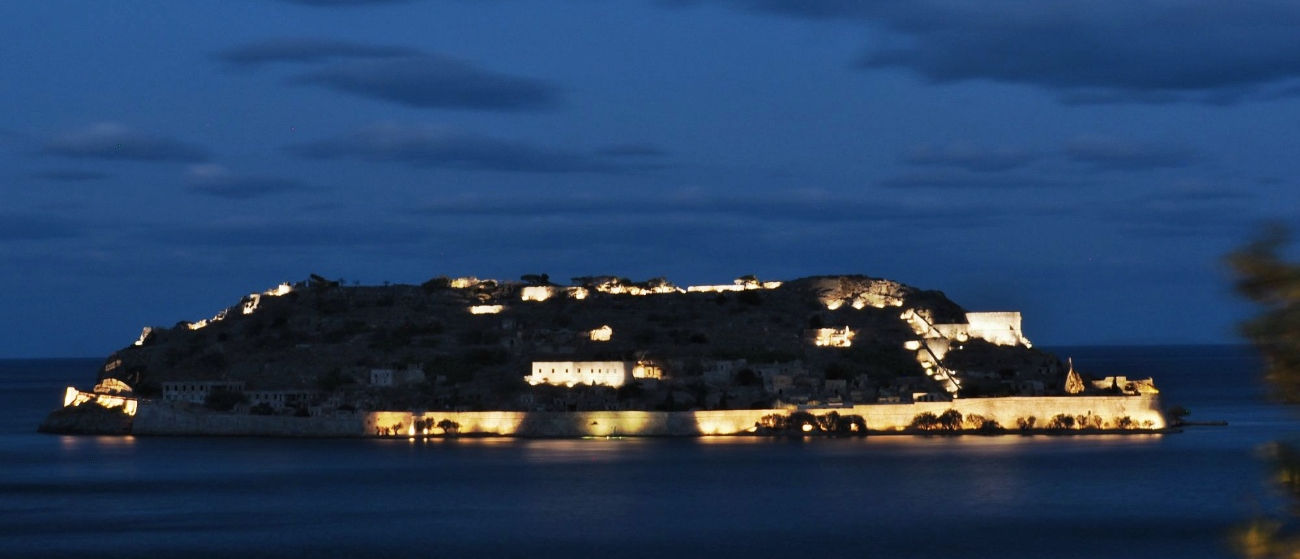
Spinalonga Islet
Base: Marina of Heraklion, Crete, Greece
Skippered Charters: min time frame: half - day
Bareboat Charters: min time frame: 4 nights
Spinalonga's original name was Calydon, though the Venetians named it Spinalonga from the Venetian words Spina - Longa, which means long thorn.
Due to its strategic location, the islet was fortified and served a variety of roles and purposes over the centuries.
“Spinalonga. She played with the word rolling it around her tongue like an olive stone. The island lay directly ahead and as the boat approached the great Venetian fortification which fronted the sea […]. This, she speculated, might be a place where history was still warm, not stone cold, where the inhabitants were real, not mythical”...
as Victoria Hislop wrote in her best - seller book “The Island”.
Having over 300,000 visitors per year Spinalonga is the second most visited site in Crete (after Knossos) and is among the top - five most visited Byzantine / post-Byzantine sites in Greece.
Overview
Base: Marina of Heraklion, Crete, Greece
Skippered Charters: min time frame: half - day
Bareboat Charters: min time frame: 4 nights
Reaching the entrance of Elounda bay you will be charmed as we approach the thrilling guardian of the bay, Spinalonga islet.
Spinalonga is a dry, sterile rocky islet lying at the mouth of the natural port of Elounda in the Lasithi prefecture of Crete.
A walk around Spinalonga – with some of the finest views of the crystalline emerald waters that surround her – will guide you through its long history.
Strolling around the island takes about an hour, but the serenity of the place and the remnants of its recent history will certainly tempt you into spending much longer. Just relax and leave your mind wander to the past as you take a promenade around the dreamscape.
A left turn by the old town hall takes you down to the beautiful seafront. take advantage of the opportunity to take some time for a swim here.
The island was well fortified by the Venetians during their presence in Crete. From a structural and architectural point of view and from an aesthetic view of the whole landscape, the island still retains an unsurpassed beauty.
The construction of the Spinalonga fortress started in 1574, when the Turks invaded Cyprus. Venetians predicted that Turks would start expanding to the West Mediterranean and decided to build a fort on the islet, thus protecting the whole lagoon of Elounda.
By building this fort, Venetians would keep pirate and Turkish ships away from the Gulf and preserve the foremost valuable salterns of Elounda.
The fortress is built over the ruins of the ancient fortress of Olous. It was designed in accordance with the bastion fortification system, with a double line of walls, towers and 35 canons in total.
During the Ottoman occupation, the fortress was marginalized and used as a place of exile and isolation. Later, a purely Ottoman settlement gradually formed in Spinalonga since the island provided absolute security for families.
During the 19th century, the role of Spinalonga was upgraded. It is estimated that in 1881, 227 families lived there. Even today there are buildings from the period of the castle town, like two - storey houses with tall yard walls and shops with wide doors and large windows.
Landscape
Base: Marina of Heraklion, Crete, Greece
Skippered Charters: min time frame: half - day
Bareboat Charters: min time frame: 4 nights
During the Minoan years and the Hellenistic period Spinalonga was a stronghold built to protect the port of the ancient city Olous.
Spinalonga, together with Olous (Elounda) flourished until the 8th century when the threat of Arab pirates forced residents to move away from the beach.
From the 8th century till the Venetian Period, the islet does not appear to have had any significant evolution.
As the islet forms a natural defense “mechanism” for Elounda harbour, in 1574 the Venetians built a mighty fortress here on the ruins of the ancient acropolis.
The Venetians kept control of the island even after the rest of Crete fell to the Ottomans in 1669. The place remained under their control for almost another half a century until its capitulation in 1715.
During the Cretan - Turk War (1645-1669) refugees and rebels used the island as a refuge and a base for bothering Turks.
Ottomans used the island initially as place of exile, later as a settlement for families.
During the 19th century, Spinalonga Flourished again since it obtained a license for export trade. In the mid-19th century, the island attracted a large number of residents, mostly merchants and sailors, who took advantage of the license. In 1881, 227 families lived there.
From 1903 to 1962 the island became a leper colony as patients of Hansen's disease all around Greece were gathered here.
After the establishment of the leper colony, residents from the opposite coast built the present village of Plaka, just opposite Spinalonga, in order to support the colony’s needs.
In 2005 author Victoria Hislop authored a gripping novel about Spinalonga, titled "The Island", which won the British Book Award of Newcomer of the Year 2007.
Today the islet is considered as one of the most important remaining strongholds in the Mediterranean Sea.
History
Image Gallery / Location





%20(1).png)











